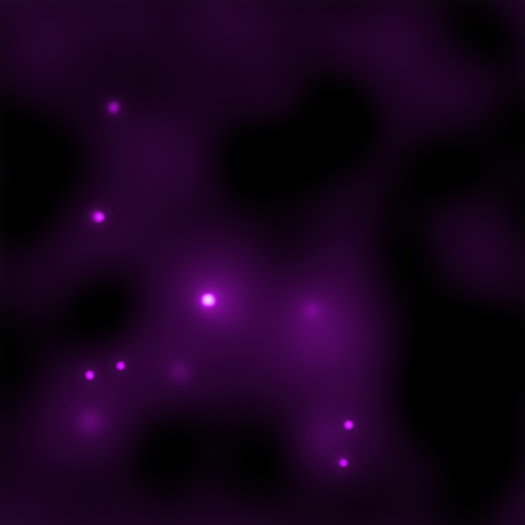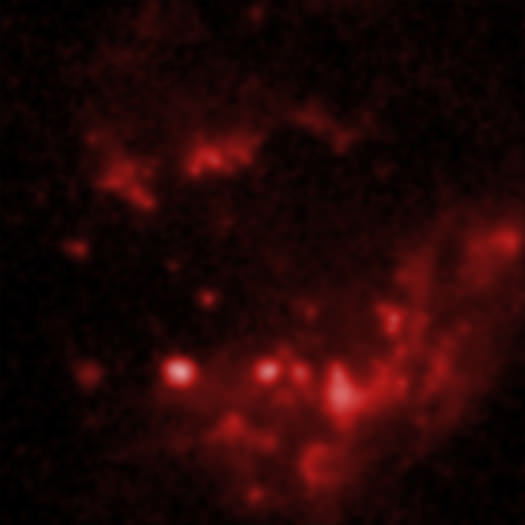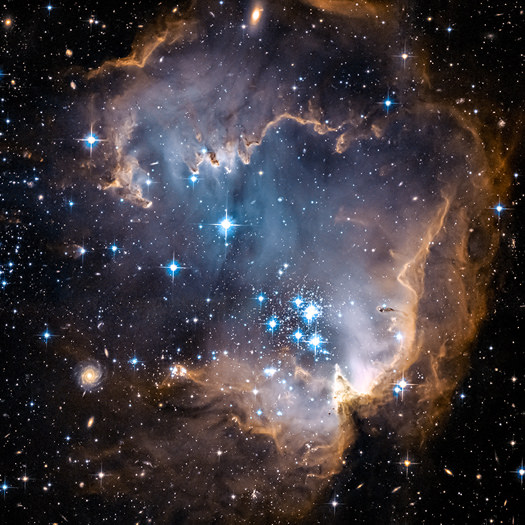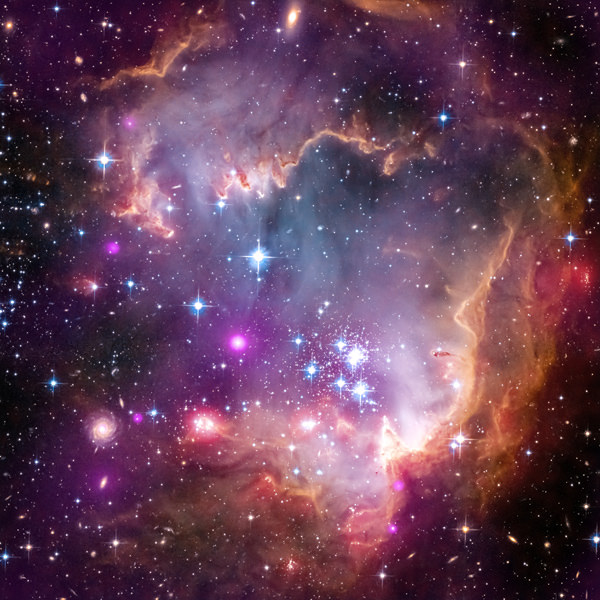This is just pretty! NASA’s Great Observatories — the Hubble Space Telescope, the Chandra X-Ray Observatory and the Spitzer Infrared Telescope — have combined forces to create this new image of the Small Magellanic Cloud. The SMC is one of the Milky Way’s closest galactic neighbors. Even though it is a small, or so-called dwarf galaxy, the SMC is so bright that it is visible to the unaided eye from the Southern Hemisphere and near the equator.
What did it take to create this image? Let’s take a look at the images from each of the observatories:



The various colors represent wavelengths of light across a broad spectrum. X-rays from NASA’s Chandra X-ray Observatory are shown in purple; visible-light from NASA’s Hubble Space Telescope is colored red, green and blue; and infrared observations from NASA’s Spitzer Space Telescope are also represented in red.
The three telescopes highlight different aspects of this lively stellar community. Winds and radiation from massive stars located in the central, disco-ball-like cluster of stars, called NGC 602a, have swept away surrounding material, clearing an opening in the star-forming cloud.
Find out more at this page from Chandra, and this one from JPL.

